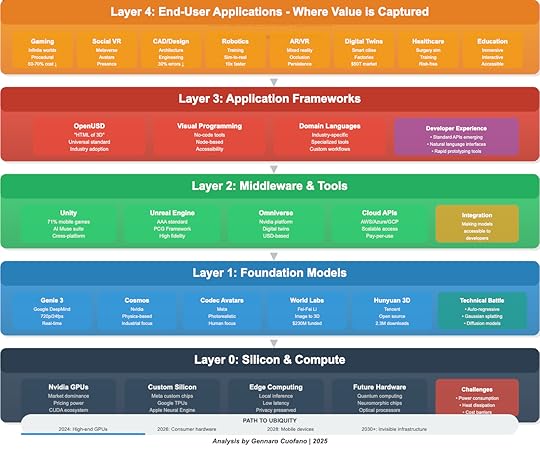World Models Infrastructure Stack
 Layer 0: Silicon and Compute
Layer 0: Silicon and ComputeThe foundation requires specialized hardware:
Nvidia’s dominance with GPUs remains unchallenged, giving them pricing powerCustom silicon efforts by Meta, Google, and Apple aim to break this dependencyEdge computing requirements for real-time applications drive innovation in efficient inference chipsLayer 1: Foundation ModelsThis is where the current battle rages:
General-purpose world models (Genie, Cosmos) that work across domainsSpecialized models for specific physics (fluid dynamics, soft body, electromagnetic)Hybrid approaches combining multiple techniquesLayer 2: Middleware and ToolsThe translation layer makes world models usable:
Game engines (Unity, Unreal) as the primary integration pointSimulation platforms (Omniverse, Isaac Sim) for industrial applicationsCloud services packaging world models as APIsLayer 3: Application FrameworkWhere developers build specific solutions:
Domain-specific languages for describing worlds and interactionsVisual programming interfaces for non-technical usersStandard formats (OpenUSD emerging as the HTML of 3D worlds)Layer 4: End-User ApplicationsThe visible layer where value is captured:
Consumer apps (games, social, education)Enterprise software (CAD, simulation, training)Embedded systems (robots, vehicles, AR glasses)
The post World Models Infrastructure Stack appeared first on FourWeekMBA.
Published on August 17, 2025 10:09
No comments have been added yet.



